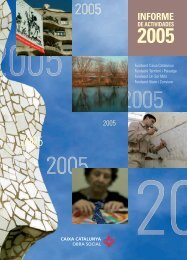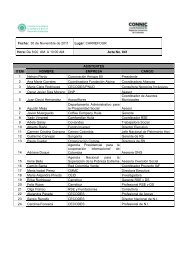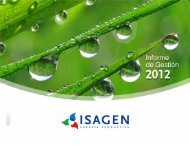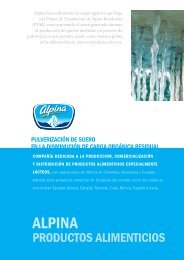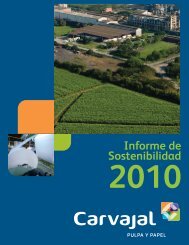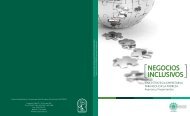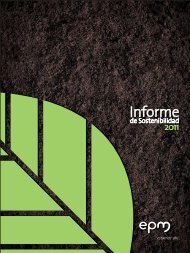Setting new standards - Friends Life
Setting new standards - Friends Life
Setting new standards - Friends Life
Create successful ePaper yourself
Turn your PDF publications into a flip-book with our unique Google optimized e-Paper software.
DIRECTORS’ REPORT<br />
CORPORATE GOVERNANCE REPORTS<br />
The award is based on those elements of underlying Achieved<br />
Operating Profit within the directors’ control and individual KPIs<br />
such as service-related initiatives, implementation of Group<br />
strategy including risk management and efficient use of capital,<br />
embedding cultural change and the earnings per share of F&C.<br />
It is the policy of the Committee not to award transaction bonuses.<br />
The Committee may, however, award special bonuses in excess of<br />
100% of base salary with prior shareholder approval.<br />
Share incentive schemes<br />
The LTIP is the main long-term incentive programme within the<br />
Company and comprises a grant of 10 pence options. Following<br />
the approval of shareholders at the 2005 AGM, the LTIP replaced<br />
both the previous LTIP and the ESOS for senior management. The<br />
Committee believes that, for a given accounting cost and dilution<br />
cost, LTIP awards provide greater incentive effect, and hence value<br />
to shareholders. Awards up to twice base salary may be made in<br />
any one year under the plan (measured as the face value of shares<br />
placed under award at the date of grant). In practice, awards made<br />
under the plan have been significantly below this maximum grant<br />
level. In 2006, the maximum award granted was to the value of<br />
150% of basic salary.<br />
The ESOS has been retained primarily to assist, as appropriate,<br />
in the recruitment of senior individuals. In the event that the ESOS<br />
is used, the options would be subject to performance conditions<br />
and there would be no re-testing for any options granted. There<br />
would be an absolute cap of three times base salary on such<br />
option grants, reduced in value proportionally for any LTIP grants.<br />
No such use of the ESOS was made in 2006.<br />
The Committee believes that long-term incentive plan performance<br />
conditions should strike a balance between achieving alignment<br />
with ultimate shareholder returns and reward for delivery of strong<br />
underlying financial performance, the latter being more directly<br />
within the control of senior management.<br />
Vesting of LTIP grants made in and after 2006 is determined by<br />
two performance measures:<br />
(i) TSR relative to that of other companies of the FTSE 100 Index<br />
at the date of each grant for 50% of the award; and<br />
(ii) Excess Profit of the life and pensions business relative to<br />
predefined targets for 50% of the award.<br />
The Committee believes that relative TSR remains the best<br />
measure of the Company’s ultimate delivery of shareholder returns<br />
and that Excess Profit is the internal financial measure that is most<br />
closely linked to value creation in a life assurance business.<br />
TSR is the percentage return in a given period to a purchaser of an<br />
ordinary share in the Company arising from share price<br />
appreciation and re-investment of dividends. The Company’s TSR<br />
over a three-year performance period is ranked against the TSR of<br />
other members of the FTSE 100 Index (as at the date of each<br />
grant), and vesting is in line with the following scale:<br />
TSR relative to FTSE 100<br />
Percentage of TSR element<br />
of award vesting<br />
Less than median 0%<br />
At median 25%<br />
Performance above median but<br />
Straight-line vesting<br />
below top quartile between 25% and 100%<br />
Top quartile performance 100%<br />
Excess Profit is the underlying life and pensions profit less expected<br />
returns on both existing business and shareholder net assets less<br />
corporate costs. Each year’s Excess Profit (net of tax) divided by the<br />
embedded value at the start of the year determines the Excess<br />
Return for that year. In essence, Excess Return is a measure of the<br />
extent to which the Company’s return on capital has exceeded its<br />
cost of capital, thereby generating value for shareholders.<br />
The average Excess Return over the performance period is<br />
compared against targets set by the Committee at the start of the<br />
period. The Committee, with the aid of independent actuarial<br />
advice, sets targets for each plan cycle that are appropriately<br />
demanding and challenging in the context of market expectations<br />
of the Company’s future profits.<br />
The targets for awards made in 2006 were set so that vesting of<br />
the Excess Return element of the award will be as follows:<br />
Average Excess Return<br />
(per annum)<br />
Percentage of excess profit<br />
element of award vesting<br />
Less than 3% 0%<br />
3% 25%<br />
More than 3% but less than 5%<br />
Straight-line vesting<br />
between 25% and 100%<br />
5% or more 100%<br />
The measurement basis excludes items driven by overall market<br />
movements. This means the measure is more closely aligned with<br />
factors that are within the control of the senior management.<br />
The Committee retains limited discretion to vary vesting by up to<br />
10% of the overall award. Furthermore, the Committee has the<br />
discretion to adjust the targets in a fair and reasonable manner to<br />
take account of corporate activity such as acquisitions, regulatory<br />
impacts and changes to accounting rules or reserving<br />
requirements. The Committee will communicate the rationale for<br />
any such adjustments directly to shareholders.<br />
Introduction of IFRS and EEV targets<br />
As advised in last year’s report, life companies are now reporting<br />
their results on an European Embedded Value (EEV) basis. The<br />
average Excess Return component for the 2006 award used an<br />
EEV basis and the 2005 award has accordingly been recalibrated to<br />
ensure it is measured consistently going forward.<br />
Performance graph<br />
The graph on page 62 demonstrates the performance of the<br />
Company based on TSR compared with the FTSE 100 TSR Index<br />
and the FTSE All Share <strong>Life</strong> Insurance Sector TSR Index. The graph<br />
shows performance for the Company’s five reporting periods since<br />
31 December 2001.<br />
Over the whole period, <strong>Friends</strong> Provident’s TSR has just slightly<br />
underperformed against the FTSE 100 Index by 2.3% but has<br />
outperformed the FTSE All Share <strong>Life</strong> Insurance Sector by 6.9%.<br />
For the year to 31 December 2006, <strong>Friends</strong> Provident’s TSR<br />
movement was ranked 58th (34th in 2005) when compared with<br />
the constituents of the FTSE 100 at the beginning of the year.<br />
<strong>Friends</strong> Provident Annual Report & Accounts 2006 61







